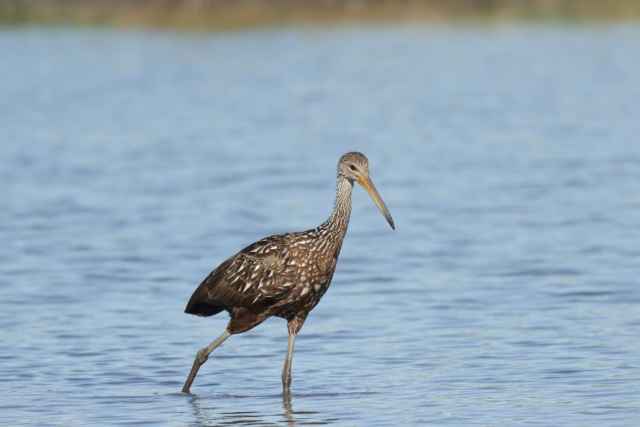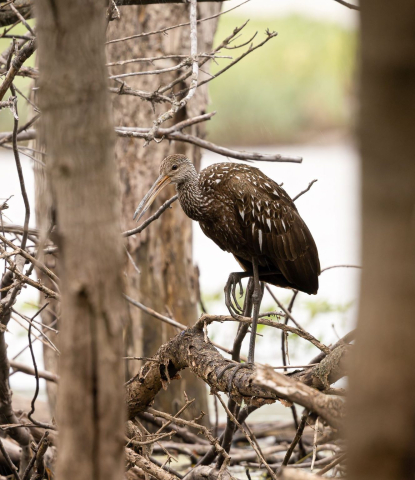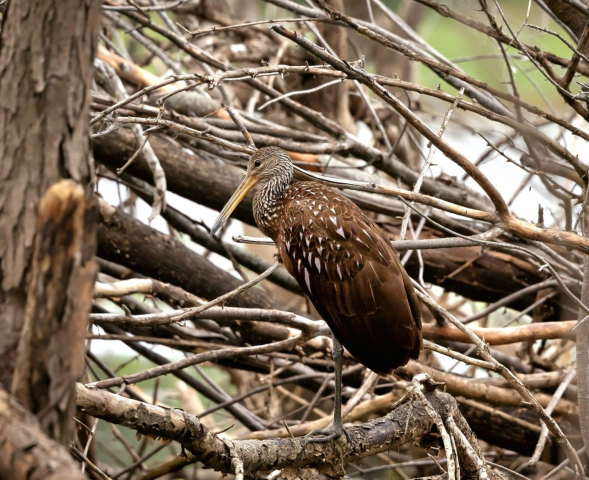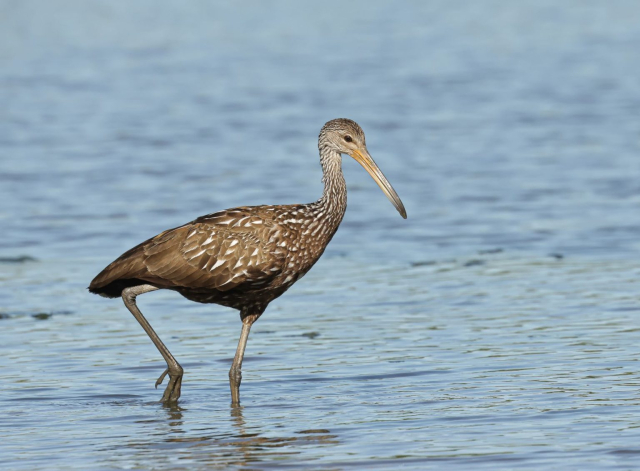Aramus Guarauna
Status: Rare casual summer visitor.
Documentation: Photograph: 23 Jun 2022, Wehrspann Wetlands mitigation pond, Sarpy Co (K. Kader et al., eBird.org).
Taxonomy: Four subspecies are recognized, one of which, pictus, occurs north of Mexico (Gill et al 2021).
The Nebraska records presumably are of pictus.
Records: There are two records.
One was found and photographed by Karen Kader at the Wehrspann Wetlands mitigation pond in Sarpy Co 23 Jun 2022. The bird was subsequently seen and photographed by many others through 3 Aug 2022, when it was rediscovered to the north at Chalco Hills RA, Sarpy Co (Jonathan Lautenbach, eBird.org). It was reported there through 5 Oct, and again 29 Oct-8 Nov. Intriguingly, there was a single sighting of one at Heron Haven, Douglas Co 14 Oct (John Parde, personal communication; photograph). It is likely all sightings were of a single individual.
The second record was of one at Crystal Cove Lake, Dakota Co 7 Oct 2023, found by Bill Huser and seen by several observers that day, but not seen subsequently. It was noted by Huser that Chinese Mystery Snails are not known to occur in Crystal Cove Lake; presumably this Limpkin was feeding on muscles, as was the first record Limpkin in Sarpy Co.
Comments: [All uncited records following can be found in eBird.org.] The unprecedented range expansion of Limpkin that began in 2019 was summarized by Minetor (2022).
2021 saw five records that year as far northwest as Red Slough, McCurtain Co, Oklahoma 12 Apr, Minnesota 30 May-19 Jul, Grayson Co northern Texas 4 Jun, Chicago, Illinois 10-14 Jul, and Putnam Co, Illinois 16-28 Aug. In 2022 a repeat on a greater scale occurred, with records north and west to three northwestern Missouri locations 19-24 May, Madison Co, Illinois 23 May, Tulsa Co, Oklahoma 10 May-26 Jun, Brown Co, Indiana 6 Jun, Linn Co, Kansas 6 Jun, and Gray Co in panhandle Texas 21-22 Jun.
Amazingly, Iowa and Nebraska had their first state records in 2022 on the same day. The Nebraska record is cited above, and the Iowa record occurred in Lucas Co 23-24 Jun.
Prior to the dispersals of 2021 and 2022, farthest northwestern record in 2020 was at Red Slough, McCurtain Co, Oklahoma 9 Jul, although in 2019 there were northerly records at three Ohio locations and in Richland Co, Illinois 5 Sep-6 Nov. However, in all years 2018 and prior, there were no records northwest of Tennessee.
There followed in 2023 another major northward move, with records widespread in the eastern US, north to northern Wisconsin and northwestern Minnesota, and west to northwest Iowa, northeast Nebraska (see record above), and with at least 15 records in Kansas, west to Cheyenne Bottoms Refuge, Barton Co (eBird.org, accessed Jul 2024). This 2023 expansion was attributed a least presumably in the west-central US to the buildup of populations in Louisiana as a source of numbers (“many thousands”), and that “summer 2023 was by far the hottest and driest of any summer in recorded weather history. Many wetlands dried up completely…” (Van Remsen, posted to OKBIRDS by Ragupathy Kannan 17 Jul 2024).
By Jul 2024, a similarly patterned northward dispersal had occurred, although up until that date, in reduced numbers and with fewer westerly records, extending only to northeastern Oklahoma, eastern Missouri, and northeastern Illinois (eBird.org, accessed Jul 2024). None had been reported in Nebraska by 22 Jul.
Occurrence of Limpkin is associated with the availability of freshwater molluscs including large snails and mussels (Winkler et al 2020). The primary diet of Florida Limpkins was the native Florida Apple Snail (Pomacea paludosa) (Minetor 2022), but since the non-native invasive Giant Apple Snail P. maculata was introduced via aquarium dumps to Florida in 1989 it has become a primary food source for Limpkins. The Giant Apple Snail has spread rapidly westward along and near the Gulf Coast, reaching Louisiana in 2006 (Benson 2022). The first Texas record of Giant Apple Snail was in 2000 (Benson 2022), probably arriving from Mexico. Associated with the burgeoning westward spread of Giant Apple Snails, Limpkin followed, reaching Louisiana in 2017 and Texas in 2021 (Minetor 2022). Limpkin numbers have increased rapidly in the new western Gulf Coast range, presumably providing the source population for the northward dispersal events beginning in 2019.
Since Giant Apple Snails do not survive in water cooler than 50 degrees F (Benson 2022), northward dispersing Limpkins are feeding on other molluscs including freshwater mussels (Mollusca genera) and Chinese Mystery Snails (Cipangopaludina chinensis). The latter is also a non-native invasive species that is widely distributed around the southern and western edges of the Great Lakes. First records of Chines Mystery Snails in Minnesota were in 1944, Iowa 1943, Nebraska 1974, Kansas 2001, and Missouri 2002 (Kipp et al 2022). As with Giant Apple Snail, Chinese Mystery Snail occurs as a result of illegal aquarium dumps.
Images
Literature Cited
Gill, F., D. Donsker, and P. Rasmussen (Eds). 2021. IOC World Bird List (v 11.2). Doi 10.14344/IOC.ML.11.2. http://www.worldbirdnames.org/.
Kipp, R.M., A.J. Benson, J. Larson, A. Fusaro and C. Morningstar. 2022. Cipangopaludina chinensis (Gray, 1834): U.S. Geological Survey, Nonindigenous Aquatic Species Database, Gainesville, FL, https://nas.er.usgs.gov/queries/factsheet.aspx?SpeciesID=1044.
Minetor, R. 2022. Limpkin range expansion and irruptions: another consequence of invasive apple snails. North American Birds 73: 4-9.
Recommended Citation
Silcock, W.R., and J.G. Jorgensen. 2024. Limpkin (Aramus guarauna). In Birds of Nebraska — Online. www.BirdsofNebraska.org
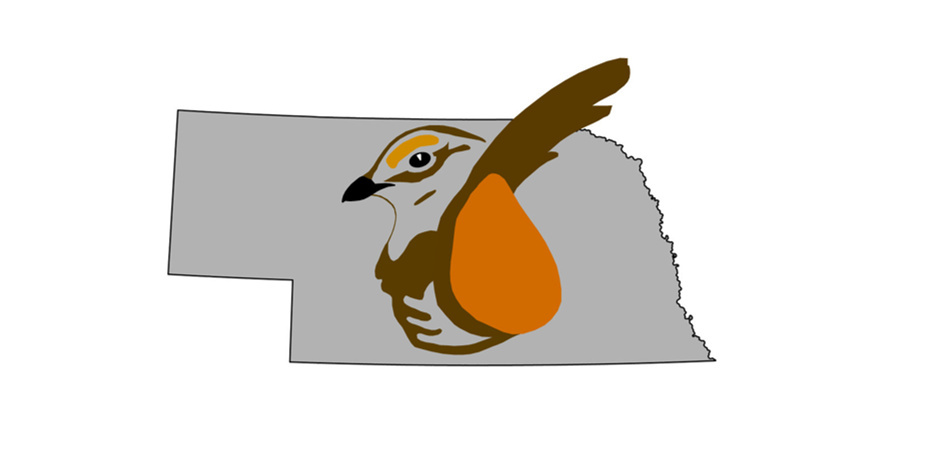
Birds of Nebraska – Online
Updated 23 Jul 2024
